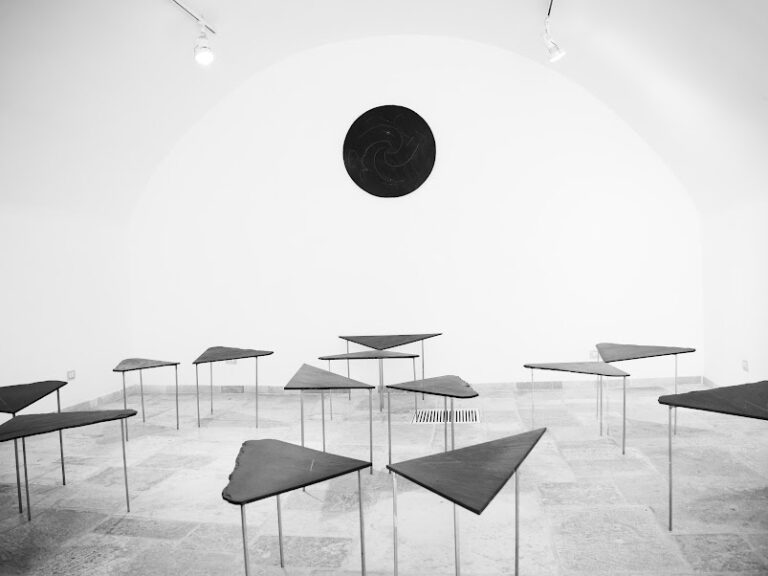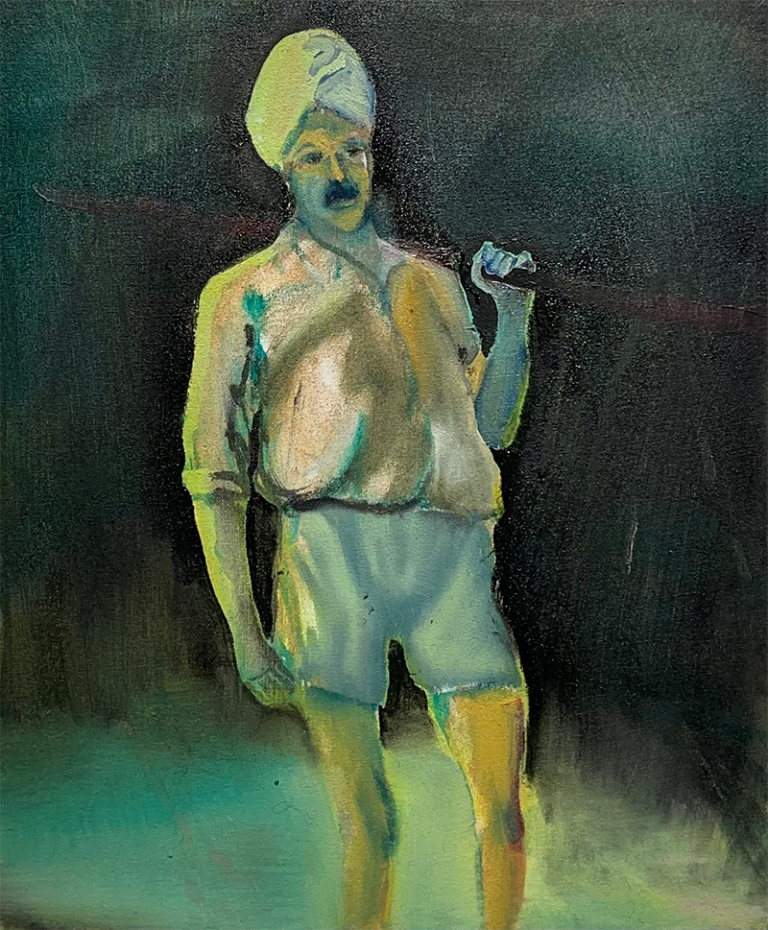Lewis Carrol comes to life in the works of this Chinese artist. Silia Ka Tung, born in Xinjiang (China); However, as he currently lives in London, he has absorbed the ambiguous suggestions of Story of miracles English to make them protagonists of his art. Not only that: its world beyond reality is reminiscent of antiquity Chinese traditions, permeated by a scent between magic and healing. Til today. To the screens of Video gamesthat take you into the scenarios of Super Marioor in the delightful cities of Animal Crossing and the rest of the Nintendo team. This exhibition is the gallery’s first Mimmo Scognamiglio It is entirely dedicated to the artist and invites the visitor to get to know his creatures. Without taking them too seriously, but letting your slightly crazy and irrational side guide you.
Silia Ka Tung was born and raised in a family where traditional Chinese medicine is still passed down and practiced. She knows very well the effects of herbs and mushrooms on the human body. From here he begins to create his works in which he alternates paper and ink Fabric sculptures padded and embroidered. “MINDLESS”. Embroidered on a curtain that acts as an opening curtain, this word welcomes the visitor. Mindless. In doing so, the artist invites visitors to enter and suggests that they allow themselves to be guided by their imagination. There is no room for logic in the magical world he created. It’s all a bit magical and irrational. Things that wouldn’t be surprising if contextualized in video games. Here’s a stuffed giraffe with dog ears, the hump of a dromedary and the habits of a narcissistic ostrich. She is seen leaning towards a mirrored pool on the floor, which she admires, pushes into, or even tries to bury her head in. Ambiguous, playful and tender at the same time.
In another room the world changes, rises above the horizon. A floor made of cloud cushions stands ready to catch raindrops seemingly hanging from the ceiling. A reverse logic. Endless upholstered items, all individually painted and embroidered. It ends with a dive into a terrestrial universe reminiscent of a undergrowth. There is a touch of proximity to the garden where the event takes place Fool’s tea. A roundabout of Mushrooms Colored people peeking out from a patch of moss on the ground. It makes you want to collect them and try a piece of them in the hope that this dreamlike adventure continues outside the gallery.
Emma Sedini
The essentiality of the characters, the rigor of minimalist formal solutions, reflected by the specificity of a technical which, however, leads to conceptual horizons, the enigmatic sculptural landscapes of geometric abstraction shape the research of Gaetano Fanelli. The artist, of Apulian origin and Milanese by adoption, returns to Bari to present “The exception to the rule – Lampante”, the solo exhibition currently running at the Nuova Era Museum, curated by Lorenzo Madaro. In the main room of Rosemarie Sansonetti’s gallery, Fanelli, who can look back on a background in his city marked by his collaboration with the historical gallery owner Marilena Bonomo, shows with his girlfriend Biagio Caldarelli and with his former teacher Mimmo Conenna – proposes an installation made of triangular slate slabs, surmounted by a black disc hanging on the wall, reminiscent of the drawings of Richard Serra. The triangular tables, placed in pairs in front of each other, bear geometric engravings in white and at first glance appear to be identical, as if they were mass-produced, as in the modular sculptures of Richard Nonas, but this is not the case. The differences, albeit minimal, between these constructions testify to the principle of exception to the rule that Fanelli relies on. In the Hypogeum of the New Era, the artist covered all the walls with 550 modules of white paper he made, while on the stacks of the same paper on the back stands out the inscription “Lampante”, recalling the ancient Apulian tradition of producing and preserving lampante oil – actually lamp oil – in underground oil mills.
Cecilia Pavone

There are two kinds of painters: those who are virtuosic in black and white, and those who are masters of the art of green, said David Hockney. To see in Mestre, Meghan Shawnee Littlewood it is part of the second category. His mastery of green tones is evident, with backgrounds that seem to have no boundaries at the edges of his canvases and extend to infinity.
A color, green, familiar to everyone who arrives in Venice. After all, the Venetians were the pioneers who dared to do the seemingly impossible: mixing colors with artists of the caliber of Giovanni Bellini and Giorgione; The latter were considered masters of the green. Not only did they mix colors, but they also knew how to master this elusive, capricious and ephemeral hue. Likewise, painters such as Paolo Veronese, Mariano Fortuny and the Biennale Teatro’s recent use of fluorescent green called “Emerald” continue to associate the city of Venice with this color and its chromatic complement.
The constant presence of animals and nature in Littlewood’s art is another fundamental theme: everything revolves around the pristine essence and the idea of origin, looking not to the west, where the sun sets, but to the east, where the light rises: the rising sun. From the paintings of wild safaris to the depictions of characters in poses, gestures and clothing reminiscent of the East, the artist’s influences and fascination with these lands, even if not yet visited but already explored, are clearly evident , studied and immersed in art as the story of a journey that one could only previously imagine.
In his painting, complex networks of symbols, reflections on art and references to nature emerge: Green, the Serpent and the Great Mother intertwine to form a narrative that suggests the need to rediscover harmony and balance through the rediscovery of ancient traditions and symbols. This reflects the influences that have shaped the artist’s art and worldview. A modern explorer, Littlewood takes us on a fascinating journey through painting and symbolism, inviting us to reflect on a world full of hidden meanings.
Francesco Liggieri
